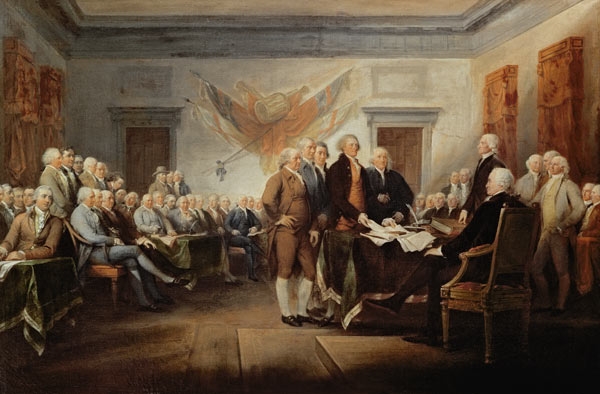Land of liberty: A look back into its history
It took almost five weeks, for the news to travel across the Atlantic. But when the British learnt in August that, on 4 July 1776, the Americans had declared independence from the British monarchy, there was hardly anything they could do -- to quell a rebellion that had now escalated into a powerful moment itself.
Vexed with taxes, 13 British colonies in North America had formally transformed their colonies into states and declared themselves as independent from Britain. And it was too late for the British, who couldn’t afford a war then, to realize how serious the American Revolution had turned out for its vast empire spanning the world.
Today, as the USA celebrates the 242nd anniversary of its declaration of independence, it might be pertinent for us to look at the history behind the day. Indigenous populations had been living in the Americas long before European explorers made their way across the Atlantic. The Native Americans were called Red Indians simply because the great explorer Christopher Columbus – who found the sea route from Europe to North America, in 1492 - thought he had somehow reached his destination, India.
The place where Columbus landed is actually in current day Bahamas, in the Caribbean; which, by the way, is also called ‘West Indies’ because Columbus had missed the ‘real India in the East’ by thousands of kilometres. Anyway, long story short, within the next 200 years, migrants and migrants’ descendants from Europe were already populating the continents of both, North and South Americas. And by 1700, there were 13 British colonies in North America alone.
In 1701, a man called William Penn wrote a ‘Charter of Privileges’ for the residents of his colony, Pennsylvania. So forward-thinking was Penn that he had envisioned a colony that permitted religious freedom, the consent and participation of the governed, and had clear laws pertaining to property rights, including those of Native Americans.
While the charter recognized the authority of the British King and Parliament over the colony, it also provided for the creation of a local governing body that would propose and execute the laws. In fact, in 1751, it was in commemoration of the 50th anniversary of this charter that the Pennsylvania Assembly ordered a special ‘bell’ to be made. And this bell had, a century later, become a potent symbol for liberty during the movement for the abolition of slavery, and became known as the ‘Liberty Bell’.
The significance of ‘Boston Tea Party’ towards US independence also cannot be understated. In the 1760s, Britain was deep in debt. And British Parliament imposed a series of taxes on American colonists. According to history.com, “The Stamp Act of 1765 taxed colonists on virtually every piece of printed paper they used, from playing cards and business licenses to newspapers and legal documents.
And the Townshend Acts of 1767 went a step further, taxing essentials such as paint, paper, glass, lead and tea”. The Tea Act of 1773 then, took the cake! Frustrated and angry at Britain for imposing “taxation without representation,” protestors got onto ships docked in Boston, and dumped 342 chests of British tea into the harbour.
The tea that British East India Company prided in trading around the world went down the sea. Angered at the Boston Tea Party, British Parliament imposed more coercive laws. And needless to say, the colonies got together, declared freedom, and called themselves the United States.
Interestingly, only 12 of the 13 states signed the declaration on 4 July. New York signed it only on 19 July. Since then, with ‘abolition of slavery’, ‘voting rights for women’, ‘ending of colour-segregation’, and ‘voting rights to African Americans’, USA has come a long way; as a country that promises to all its people – with the declaration - certain unalienable Rights, among which are “Life, Liberty and the pursuit of Happiness.”
Related Posts

